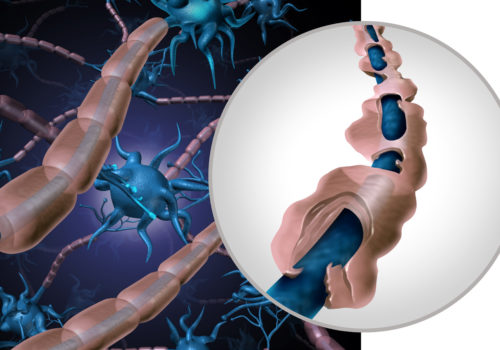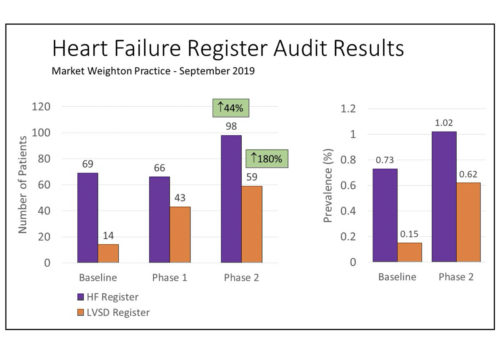There appears to be an association between migraine and cardiovascular disease (CVD), and especially ischaemic stroke. How real is the absolute risk, what may be the cause, and what, if anything, should we tell our patients?
What are migraines?
Migraine is common, affecting 11–15% of the population, and is more prevalent in women. With a lifetime prevalence of 10-20%, 90% of patients with migraine experience their first attack before the age of 50. About three-quarters of patients may experience auras, including speech, sensory, visual or motor symptoms. Approximately three quarters develop a ‘prodrome’ 1-2 days prior to the attack, which could include increased yawning, euphoria, depression, irritability, food cravings, constipation, and neck stiffness.
The diagnosis of migraine is based on patient history and fulfilling the International Headache Society diagnostic criteria (Table 1).
|
At least 5 headache attacks lasting 4–72 hours and at least two of the following: |
|
|
In addition, during the headache the patient must have either: |
|
Table 1. International Headache Society diagnostic criteria.
What causes migraines?
The ‘Vascular Hypothesis’ that migraine headache is caused by the dilatation of blood vessels, while the aura of migraine results from vasoconstriction, is no longer considered viable.
It is now suggested that a self-propagating wave of neuronal depolarisation spreads across the cerebral cortex. This activates the trigeminovascular system, leading to inflammatory changes in the pain-sensitive meninges that generate the headache of migraine through central and peripheral reflex mechanisms. Neurones become sensitive to nociceptive and non-nociceptive stimulation.
What is the evidence for a link with CVD?
A large meta-analysis from 2009 (Schurks et al., BMJ) showed a twofold increased risk of ischaemic stroke only in people with migraine with aura. There was also a higher risk among women, those aged less than 45, smokers, and women who used oral contraceptives.
Emerging evidence indicates that this risk extends to other cardiovascular disease as well and that the relative increase in risk is greater in women. For example, analysis from the Nurses Health Study (115,541 women) showed over 20 years an increased risk of CVD (HR 1.5), myocardial infarction (HR 1.4), and CVD death (HR 1.4) in women with migraines (Kurth et al., BMJ 2016).
A recent large study showed that during the first year after diagnosis, migraine was associated with an 8-fold increased risk for stroke and an approximately 2-fold increased risk for other cardiovascular events compared with matched general population controls (Adelborg K et al., BMJ 2018). Increased risk continued after the first year, but the absolute event rate was low. This study showed an increase risk in both ischaemic and haemorrhagic stroke and in patients both with and without aura
It should be remembered, however, that many studies have a retrospective design with a possible risk for recall bias, and in the prospective studies, migraine status and stroke were often self-reported, leading to risk of misclassification, or the studies were performed in selective populations limiting generalisability.
A 2017 Swedish prospective population-based twin cohort study (>50,000 patients) used an evaluated questionnaire for more accurate migraine diagnosis and compared within twin sets to exclude familial association (Lantz M et al, Brain 2017). In this large study, overall migraine headache was not associated with an increased risk for stroke but there was a modestly increased risk, potentially influenced by familial factors, in patients with migraine with aura. Cardiac risk factors (hypertension, peripheral vascular disease and obesity) were also found to be more common in migraine sufferers.
The QRISK®3-2018 risk calculator now factors in migraine. A prospective open cohort study (Hippisley-Cox J et al., BMJ 2017) to validate this in GP populations in the UK found that migraine was associated with a 36% increased risk of CVD for women and a 29% increase for men (although this did not distinguish between migraine with/without aura or hemiplegic migraines). In analysing these results, it should be remembered that data in this study were recorded by clinician diagnosis from medical records and may be susceptible to ascertainment bias.
What might the mechanism be?
Several mechanisms for linking migraine to CVD have been proposed – including vasospasm from triptans, endothelial abnormalities, prolonged spreading of cortical depression and increased platelet aggregation – but none have yet been proven.
Migraine sufferers might show vulnerability to infarction during cerebral ischaemia; spreading cortical depolarisation and cerebral hyperexcitability might increase the vulnerability of neurones to ischaemic stress. Several studies have found an association between migraine with aura and silent infarct-like lesions on brain MRI located mainly in the posterior circulation white matter or cerebellum. However, the aetiology, nature and clinical significance of these MRI lesions remain unclear.
Resting cerebral blood flow is significantly lower in migraine with aura subjects with high white matter hyperintensity load. In addition, it is thought that acute stroke patients with no significant mismatch between diffusion and perfusion lesion volumes on brain MRI are less likely to benefit from reperfusion therapies. A recent study (Pezzini A, et al., Stroke 2018) observed a significantly higher proportion of no-mismatch among migraineurs – even more prominent among patients with migraine with aura.
How can migraines affect the heart? Perhaps endothelial dysfunction or abnormal vascular reactivity might increase the predisposition to both the neurological events of aura and vascular disease. Unfortunately, we do not really know.
Conclusion
There appears to be a link between migraine and CVD, especially in younger patients, those with auras and women (Table 2). However, many studies are self-reported and subject to bias, the mechanism is unknown, absolute risk is low and we do not know how to treat.
Reducing risk factors makes sense but is not evidence-based if solely reducing risk for migraine sufferers. Rather, migraine should be viewed as an additional risk factor when assessing overall CVD risk. The absolute increase in risk is low but migraine has a high prevalence, and low absolute risk increases in young patients may lead to a disproportionate increase in years of life lost.
|
There appears to be a link between migraine (especially in younger patients, those with auras and women) and CVD. |
|
Table 2. What a doctor should know about a migraine-CVD link.
|
References
|
|
Author Information Dr Rob Howlett GPwSI Cardiology, Cambridge, UK Email: robhowlett@me.com |
|
Read further articles: |
























